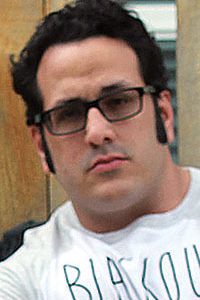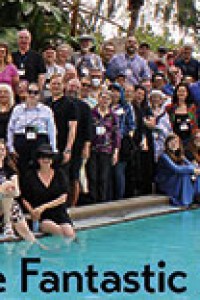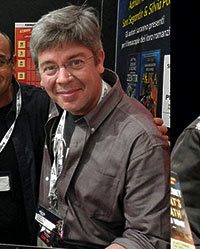Sue Burke: Aliens Among Us

Susan Carol Burke was born June 21, 1955. She grew up in Milwaukee WI and lived there for more than 40 years, spent a year and a half in Texas, and then relocated to Madrid, Spain with her husband in 1999, where they stayed for 17 years. In 2016 they returned to the US, settling in Chicago. She began writing for newspapers as a teenager, attended the University of Wisconsin in Milwaukee, and has worked as journalist and translator.
Burke began publishing short fiction and poetry in the mid ’90s, and her stories have appeared in Asimov’s, Clarkesworld, and other publications. Her debut novel Semiosis (2018) was a Clarke and Campbell Memorial Award finalist, and was followed by sequel Interference (2019).
“Semiosis is about colonists on a planet called Pax who discover that an indigenous plant species is sentient. One evening back in the ’90s, I was watering my plants and realized that one of my houseplants had killed another plant. It was a pothos vine, and it had wrapped itself around the other plant, starved it for light, and killed it. At the time I felt like it was my fault, because I should have been paying more attention. Less than a month later, a different plant tried to kill another plant, and I thought that was suspicious. I began to do some research and discovered that plants are actually very aggressive – they fight to the death over sunlight in all sorts of different ways. The more research I did, the more I realized I had a lifeform so different from us living in my house, and it needed to be put into a story. Then it was just a question of figuring out the story, and learning more about plants: the horrible things they do to animals, as well as to each other, and the way they relate to different aspects of the world around them. Plants are very aware of their environments. They are not merely assertive, they are aggressive. They will murder you if they have to, but they will try to bribe you first, because that works better. Animals do all sorts of different work for plants. Because I was writing science fiction at the time, I asked, ‘What would be the science fiction setting where I could let plants do what plants really want to do?’ That was the inspiration.
“One question I get asked is what piece of literature inspired my book, and it was not that way. It was the science that inspired the book. I wanted to tell a story that used that science. What we’re learning now in botany is amazing because now we have new scientific tools, and people have started paying attention more, for a lot of reasons. The science came first, and then the story.
“Apples are the typical example of plants using other organisms to perpetuate themselves, because they started out as a fruit in Central Asia, and now they’re all over the world. They have bribed humans to take care of them. Most fruits are the same way. The grass of the Great Plains uses the buffalo to keep the weeds out of the prairies, because you can eat grass, or cut it off with a lawn mower, and it just grows up again; the stems are actually under the ground, so you can’t hurt them that way. Weeds, however, grow up with a central stalk, and when that gets eaten, the weed dies. That’s what the buffalo does. The buffalo herds grew as the prairies were expanding and they worked with each other to create an ecosystem. There are many other animals that have interesting relationships with plants – ants and acacias, and bees with flowers, of course.
“I got to a point in the plot of Semiosis where I had to ask, ‘What would a plant do in this situation?’ There were a lot of possible different answers. Some plants live in communities, so what happens when they’re alone? We know that a city tree does not live as long as a tree in a forest. Cities are a stressful environment, but the trees are also alone and they don’t get a lot of help. If plants have a social life, what happens if you have a plant that’s very social but gets stuck alone? We know that solitary confinement is torture, so you have a plant – in this case, my protagonist, Stevland – who is alone, and it’s very hard for him.
“I did a few things with the environment on Pax to speed the plants up, but in the end, plants are just slow, and I couldn’t solve that problem. That’s why the book has a generational structure. I needed to give the plants time. One way I thought I could do that was to stretch the story out from one generation to another. What that meant, though, was that every generation had to have a compelling story of its own. I had an overarching plan. First the people discover the plants who are intelligent, then they discover the city where Stevland lives, then they start to talk to Stevland, and then they meet the colonists from another alien species, the Glassmakers, and that goes badly. Then the Glassmakers come to the city; that goes very, very badly. I knew the humans were going to meet the Glassmakers, and it was going to go badly, but how badly could it go? The Glassmakers are basically modeled after ants, and ants are aggressive. When I was a child, we used to have ant wars in our yard, and the black ants would be attacked by the red ants, and the red ants always won. That probably traumatized me as a child. Then again, if you look at human behavior, we offer some very bad examples of what to do, too. I had to figure out that part of the story, and also plant the seeds for those events earlier on, because there are recurring characters who have to relate to each other. It was a matter of working through that general plan. If Stevland’s going to start to talk to people, how can I make that as interesting as it could be?
“Some of Stevland’s development was because I knew enough about plants by then to have an idea that, if you had a plant that was very intelligent, and of his size – because size matters, that means that he can do more things – what would his natural reaction to people be? He is alone, but he is a social species, so he’s suffered a lot. He has separation anxiety very badly. He doesn’t want the people to go away, and will do anything to keep them with him – which is what humans would do. You can look at dysfunctional relationships among humans: if your wife is going to leave you, and you depend on her, you will do anything you can to keep her, including things that are very bad. Stevland has reached a point where he has to keep these people with him. He would prefer, just because he’s a good guy, to do that nicely, but he will do anything to prevent them from leaving. That was a scary point, to realize he had no limits on that.
“In the first book, the satellite let Earth know that there was now a settlement on Pax, and so in the second book, Interference, the humans, for various reasons, decide to come and see how things are going. It doesn’t work out well in a lot of different ways. That book takes place 200 years after the first. The characters all feel human, but to some extent having the people from Earth meet people on Pax is almost like first contact with aliens. On Earth, when we had explorers who met natives for the first time, even if they were trying to do things well, there were misunderstandings.
“I’m writing a totally unrelated novel now that takes place over the course of two weeks. There’s a woolly mammoth in it who’s been recreated from DNA. The person who’s caring for it (who was also recreated from DNA!) discovers that she has sisters, and her sisters discover each other. Things go wrong outside of their lives and they need to cope with that. That was based on the idea that we’re not in control of our destinies, no matter how much we feel like we are. One of the things science fiction does is expose us to the fact that we don’t control technology. Technology controls us, and we just cope with it. When big changes happen in the world, we deal with them. Literary fiction is more about the idea that if you understand yourself well enough, you can cope with the world, so your goal is to understand yourself. Science fiction often has the idea that something is going to happen to you, and you’re going to deal with it, or not – what you understand of the world is more important, sometimes, than what you understand about yourself, though it’s always good to know yourself. I could be a perfect person, but the internet was invented, and that has changed my life totally. I can never control Facebook, and I can never control Twitter, but they can have a big effect on me. That was the issue I was looking at in the novel: the world is going to affect these people, and they just cope, or not.”
Interview design by Francesca Myman. Photo by Liza Groen Trombi.
Read the full interview in the March 2020 issue of Locus.
 While you are here, please take a moment to support Locus with a one-time or recurring donation. We rely on reader donations to keep the magazine and site going, and would like to keep the site paywall free, but WE NEED YOUR FINANCIAL SUPPORT to continue quality coverage of the science fiction and fantasy field.
While you are here, please take a moment to support Locus with a one-time or recurring donation. We rely on reader donations to keep the magazine and site going, and would like to keep the site paywall free, but WE NEED YOUR FINANCIAL SUPPORT to continue quality coverage of the science fiction and fantasy field.








